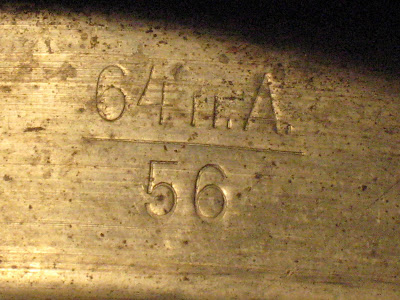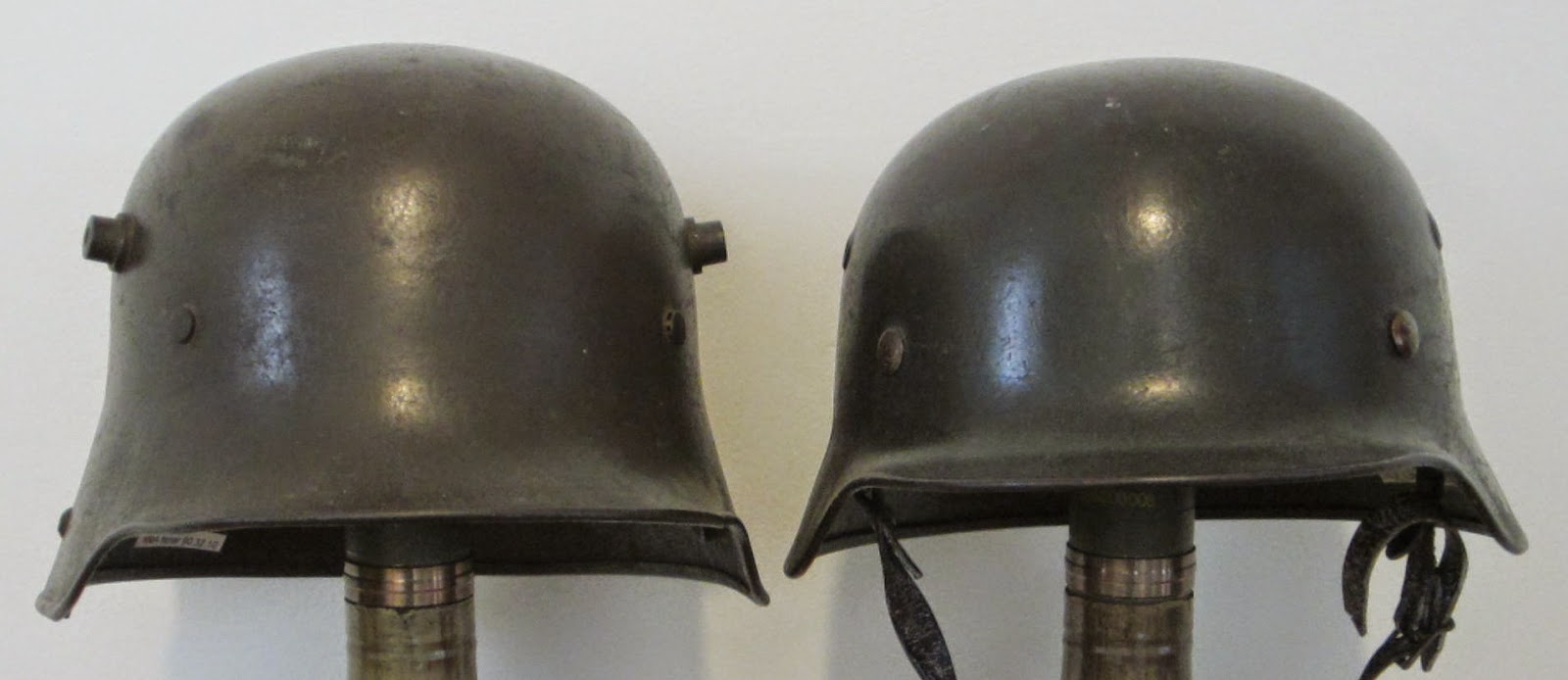Okay, so here's the deal...
I like to include "in action" photos in these posts to put the helmet in context. I found though that as I was doing that with the M.40 all it was seeming to do was glorify the Nazis with combat imagery, so I took an alternate route and selected pictures of Nazi depredations against humanity with M.40s front and center in each picture, sort of an ironic commentary. But that was bringing me down; and this blog has always had a light-hearted snarkiness about it. So instead, I found two images which sum up my views on the krauts of WWII.
The ideal:
The reality.
Sorry you fascist pricks but we win.
Ahhhh...that felt good.
Now, the walk-around of the German M.40 combat helmet.
(note: for some reason Blogger is cropping my photos in a weird way. To optimize the view click on the photos for the full image.)
The German helmet of the Second World War was a refinement of the M.16, 17, and 18 helmets of the First World War. Here's a side-by-side comparison.
The M.40 is more compact and close-fitting than its progenitor, it is distinctly more bowl shaped compared to the "coal bucket" shape of the M.16 on the left.
Although the position of the ventilators remains the same, the distinctive lugs on the M.16 were done away with as the armored frontal plate which they supported was
obsolete by WWII.
From the top the M.16 is more oval and considerably larger than the M.40. The M.16 provided superior protection from falling debris.
The green finish on this helmet is about 85 percent intact.
Three split-rivets support the liner, two on the sides placed forward...
and one in the rear. Note the pronounced flare of the skirt.
This is a single-decal helmet which is typical of the army version of the M.40.
Ventilator, rivet, and decal.
Here, is illustrated the primary difference between the M.35 and M.40 helmet; the ventilator. On the M.35 (top) the ventilator is comprised of a separate bushing, though for the M.40 (bottom) the ventilator was stamped, or embossed, thus cutting production time and cost, which by 1940 was becoming an concern for Germany.
Otherwise the two models are very much identical including the folded edge.
The insignia of the Wehrmacht - the German army.
The M.31 liner was a head and shoulders (pun very much intended) improvement over the very simple and far less comfortable and effective suspension
found in the M.16 of the Great War.
Steel leaf springs provide a resilient spacer between the shell and the head of the wearer, a crucial consideration in the safety of the soldier.
The leather is connected to the band with split rivets, you can also see the fabric that provides a cushioned buffer between metal and leather.
Each finger of the leather is backed by a leather grommet and gathered with the cord that is unique to German helmets.
The well-crafted chinstrap is affixed with a slot and double-headed rivet to a rectangular bail attached to the liner band.
The liner band is affixed to the shell with three robust split rivets backed
by a slotted washer.
One of my favorite things about helmets are the various markings you can find, and WWII German helmets are awash with markings, always a treat for the collector.
A faint dome stamp remains visible.
The chinstrap is embossed with a maker's mark.

A size indicator under the suspension leather.

A production number inside the rear skirt.

And on the left ear...

the letters and numerals indicate manufacturer and size, in this instance the maker is Eisen-und Huttenwerke, AG in the town of Thale in central Germany and the size is 64.

The liner band has both the size of the liner and the size of the shell.

The other side of the band is marked with the maker and the date and place of manufacture.

Right down to the chinstrap bail, all of the details speak to the high production values and
overall quality of this helmet.
So there you have it; a classic design that defined Germany during
the worst part of the twentieth century.


























1 comment:
Glorious looking helmet, unlike the soviet or american shitcans, and I'm not even gonna say anything about the equipment of a certain island nation.
Post a Comment